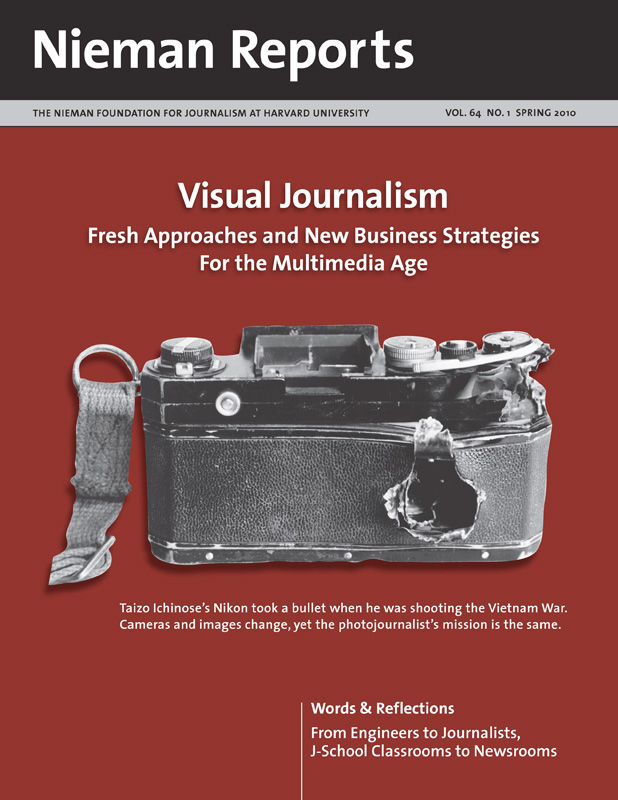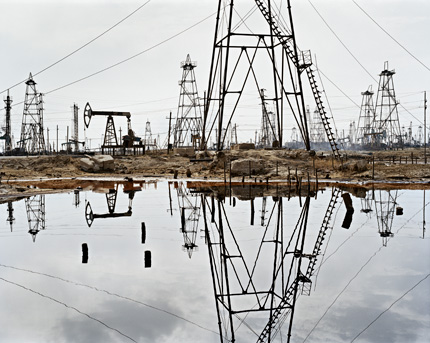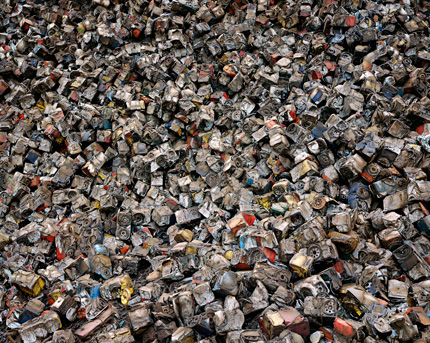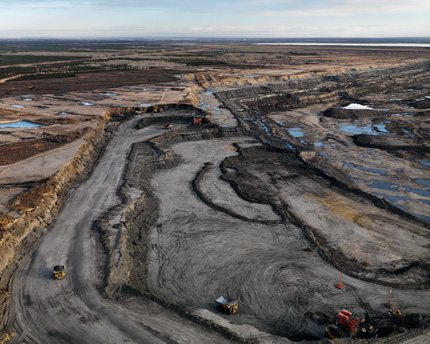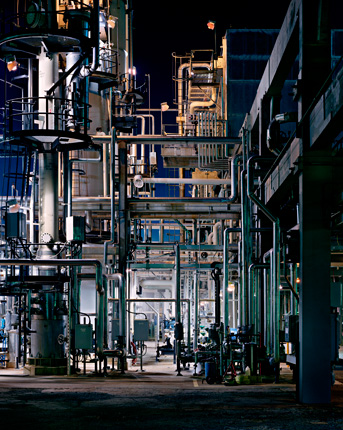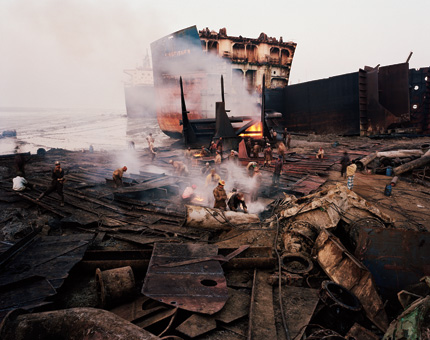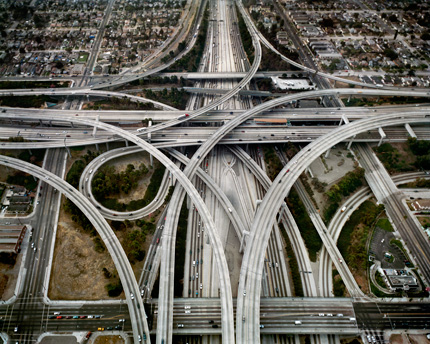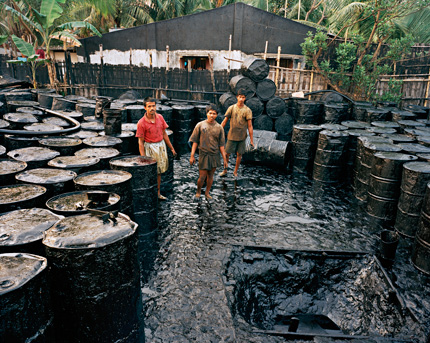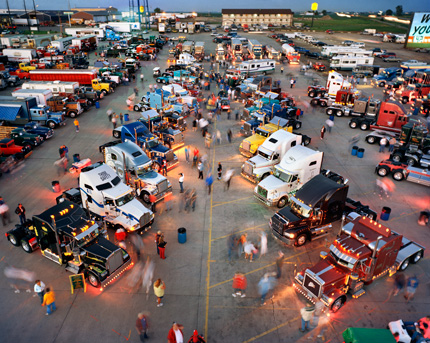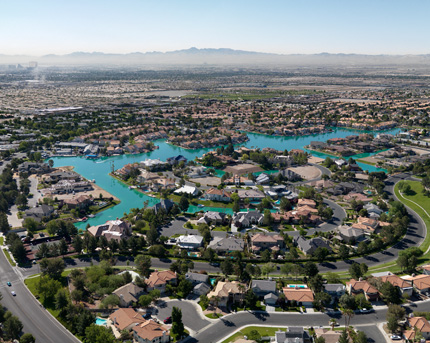The film “Manufactured Landscapes” tells the story of Edward Burtynsky’s large-scale photographic exploration of the materials and debris used in industrial endeavors. By following him to quarries, recycling yards, factories, mines and dams, the film shows how he used his camera to transform intrusions into the natural environment into forms of artistic expression. In 2009, “Edward Burtynsky: Oil,” his book and photo exhibit that was a decade in the making, offered visual documentation of how the extraction of oil and its use affects our landscape and our lives. In a 2007 interview with Treehugger.com, Burtynsky talked about the still photograph, its artistic EDITOR’S NOTE:
Read Burtynsky’s complete interview »expression, and how he uses the visual images he captures to draw people’s attention to environmental degradation. An edited excerpt from the interview follows:
To see more of Burtynsky’s work, visit his Web page.
In doing still photography, the same subject may look horrible at noon, but it could be magical at eight. So it’s an understanding about where to be, when, how to translate it, to see potential, even when I’m witnessing it at a point where there is no potential. To be able to look beyond. It’s sort of like going into an apartment, and it’s a real fixer-upper. You can see its potential, but most people walk out because they go, “That’s too much.”
I just begin to figure out, “What can I draw out of that to create a compelling image that brings us to that place?” So that we don’t avert our eyes, but we get drawn into that place. Once a person is drawn into the place of the content of these images, it forces that person into this kind of forbidden pleasure: “I’m enjoying being in there, but there’s something wrong here. Why am I enjoying this? I shouldn’t be. This isn’t good. This is a wasteland.” Or “this is a dump” or “a consequence of our badness,” or whatever. It’s an interesting thing to do—to bring viewers to that point where they begin to grapple with their own consciousness about being in that space.
Twenty-five years ago, when I started doing this, nobody was paying much attention. In the last five or 10 years the world has met up with some of the ideas I’ve been grappling with in my work. It isn’t like I hopped onto a wagon because everybody’s hopping on. I’ve been traveling through the desert of wastelands for a long time trying to create this compendium and body of work that somehow is describing another aspect of it.
What is uplifting is that this work is now having an effect. People are beginning to understand and pick up where the environmental movement failed—with a sustainability movement that includes government and corporate practice, along with environmentalists and citizens. It kind of says, “We’re all in this.”
When I look in the history of photography, I find examples of this from earlier times: Carleton E. Watkins and his photographs of the West led to the preservation of Yellowstone, and the national park system grew out of that. Ansel Adams added to that with his work in Yosemite and through the Sierra Club, expanding the preservation of natural worlds. And Lewis Hine in his photographs of child labor; his visual evidence of wrongdoing brought child labor laws into play.
Still images are used as the iconographic representations of issues we need to grapple with in our times. In our consciousness, they function differently than film does. Images lock on. If we think of the Vietnam War, there was TV coverage of it, but it’s the still images—the girl running from the napalm, the photograph of the man being shot in the street. Four or five iconographic images define that war; they are what speak to us about the problems with that war.
Still photographs allow that kind of fragment to become embedded into our memory. If we think of our own lives, photographs work that way too. Try to remember yourself at five and you might have some vague memories. But if somebody took a photograph of you at five, then you probably can even remember the clothes that you were wearing and the house and the layout and the kind of tile floors and your favorite food when you were five. That photograph allows you to do that. Without it, it would be very hard to get back to that place in your mind.
So photographs become part of our history and part of our way of remembering what has passed by. They are interesting and powerful tools to remind us where we come from, the things we do and values we uphold. They embed a lot of these things within them, and that is part of why I like photographs. They hold that potential.
Now with digital media a lot of people in the art world are moving into the staged image; Photoshop creates the image. It remains to be seen how the general public will embrace this new period of photography in which they can’t rely on the photograph to actually be a place in the world. Again, it depends on who the viewer is; there’s a complex connection between viewing images and their relationship to truth.


